While jade plants and echeverias have their charm, the world of succulents holds far more fascinating specimens. These remarkable plants showcase nature’s creativity—from architectural wonders to master camouflage artists. Here are ten exceptional succulents that will transform your collection from ordinary to extraordinary.
1. Crassula ‘Buddha’s Temple’
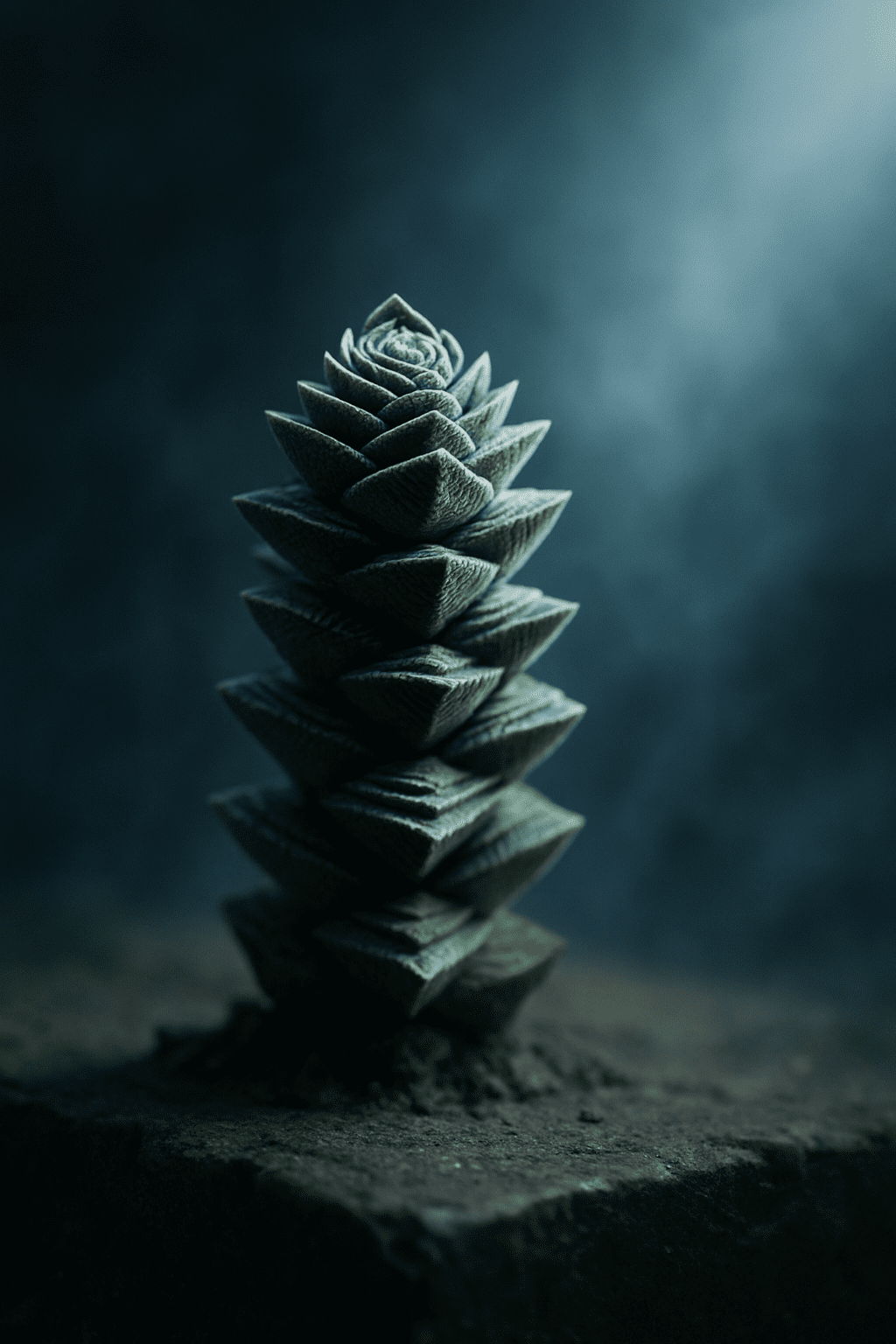
The Architectural Marvel
This striking succulent forms a perfect tower of tightly stacked square leaves, creating a hypnotic spiral that resembles a zen pagoda. Each leaf layer rotates slightly, building a living sculpture that’s both minimalist and mesmerizing.
Why it’s special: Grows vertically in precise geometric patterns, reaching up to 6 inches tall while maintaining perfect symmetry.
Care notes: Prefers bright, indirect light and minimal water. Allow soil to dry completely between waterings. Growth is slow but steady—patience rewards you with an architectural masterpiece.
Availability: Rare and highly sought after. Expect to pay $25-50 for a mature specimen. Check specialty succulent nurseries or online retailers like Mountain Crest Gardens.
2. Monilaria Moniliformis
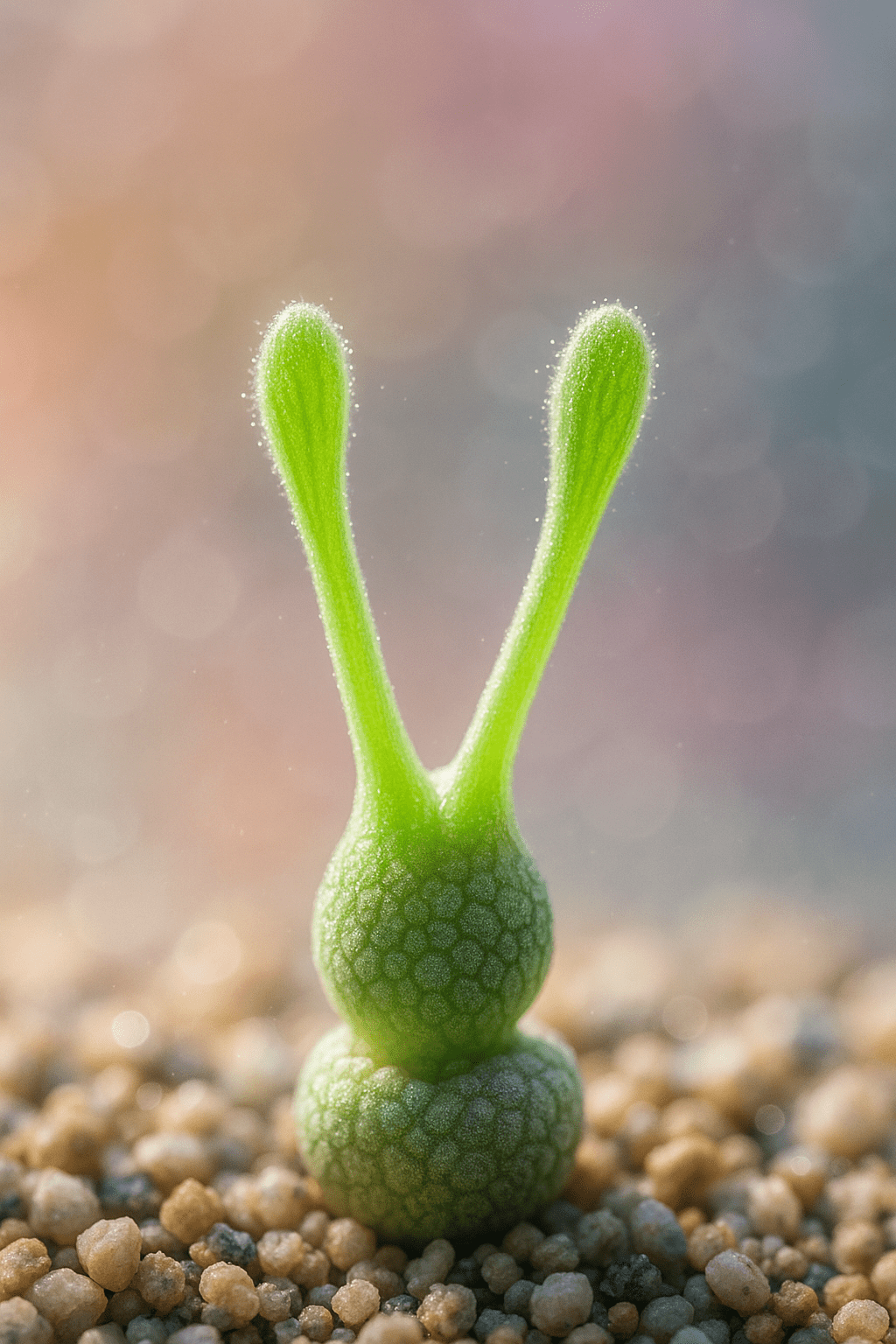
The Bunny Ear Succulent
This South African native produces adorable green “bunny ears” during its spring growth period. The rounded, fuzzy leaves emerge in pairs, creating an irresistible display that has captured the internet’s heart.
Why it’s special: Seasonal transformation—dormant in summer, then erupts with bunny-ear growth in spring. Each “ear” is actually a specialized leaf designed to capture moisture.
Care notes: Requires a winter dormancy period with cooler temperatures (50-60°F). Water sparingly during dormancy, then increase watering as growth begins in spring. Needs excellent drainage.
Availability: Often sold out due to viral popularity. Seeds are more readily available than mature plants ($15-30). Try Rare Succulent or Etsy sellers.
3. Haworthia Cooperi
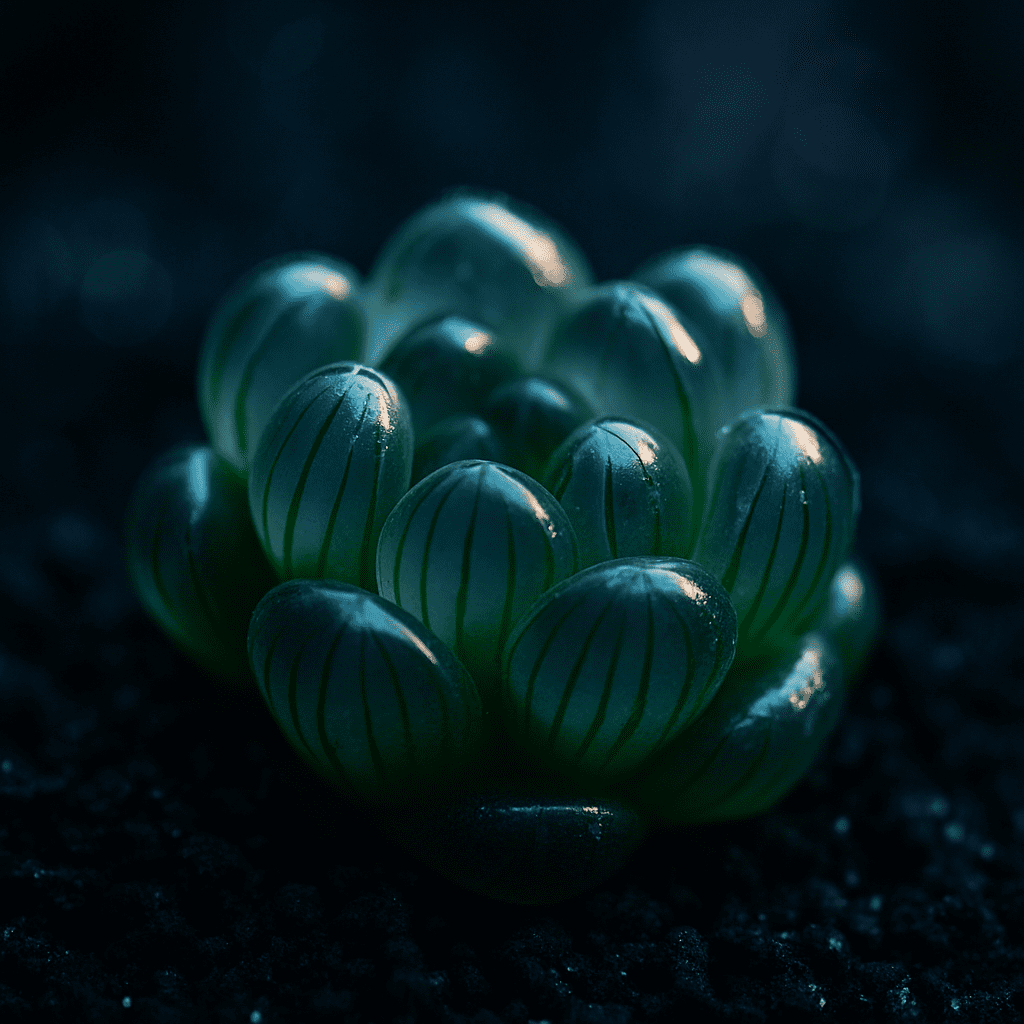
The Crystal Succulent
This gem-like succulent forms rosettes of translucent, jelly-clear leaves that shimmer like tiny water balloons. The transparent “windows” at the leaf tips allow light to penetrate deep into the plant—a clever adaptation for survival in harsh conditions.
Why it’s special: The translucent windows (called “fenestrae”) channel light to photosynthetic tissues buried safely within the leaf, protecting them from intense sun.
Care notes: Thrives in bright, indirect light. Direct sun can burn the delicate windows. Water when soil is dry, but avoid overwatering. Stress from slight drought actually enhances the crystal-like appearance.
Availability: More common than others on this list. Available at many nurseries for $8-20. Look for varieties like ‘Truncata’ or ‘Obtusa’ for different window shapes.
4. Titanopsis Calcarea
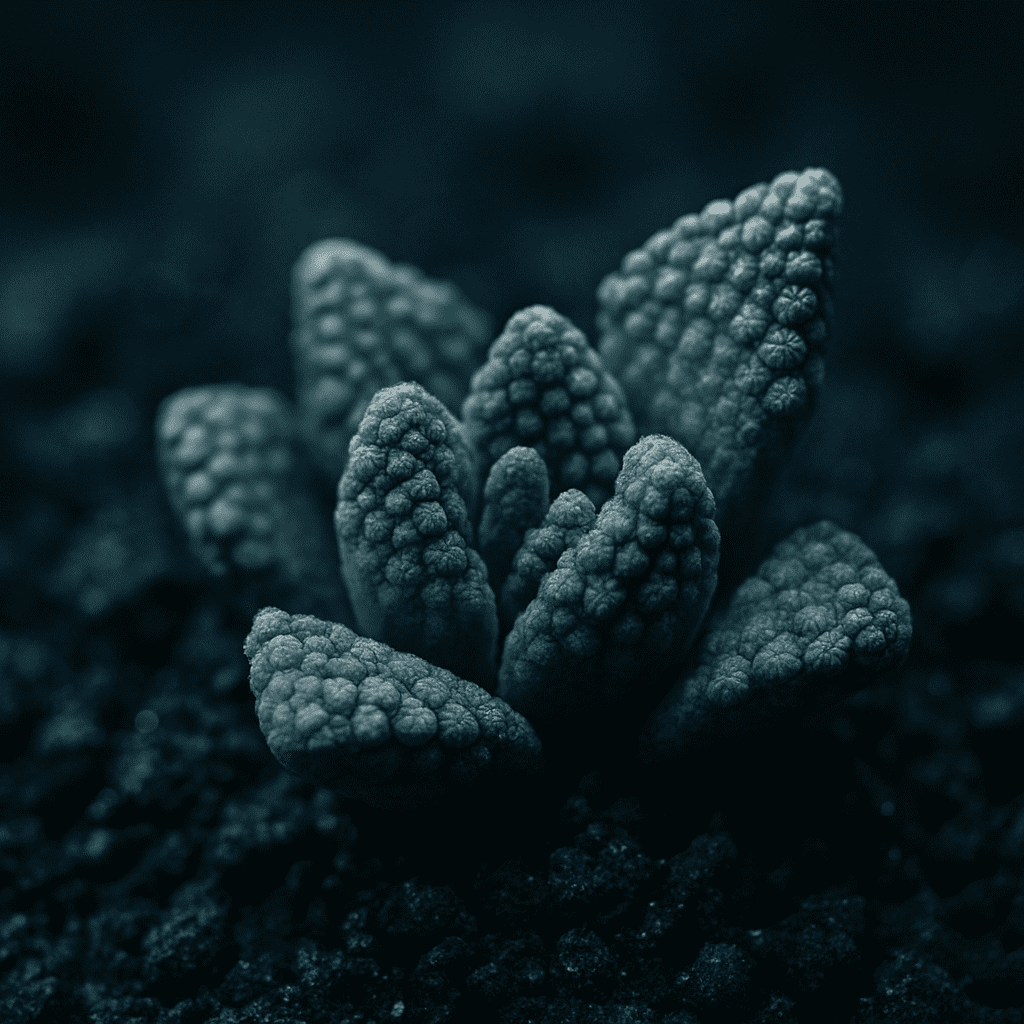
The Living Camouflage
This master of disguise has evolved to look exactly like the limestone rocks in its native South African habitat. The thick, warty leaves are covered in white tubercles that mimic the texture and color of surrounding stones.
Why it’s special: Perfect mimicry as a survival strategy. The textured surface also helps reflect intense sunlight and conserve water.
Care notes: Needs gritty, well-draining soil with added limestone chips. Minimal water requirements—overwatering is the quickest way to kill it. Bright light essential for maintaining proper coloration.
Availability: Specialty item found at rock garden nurseries or online succulent specialists. Expect $15-25 for a mature clump.
5. Euphorbia Obesa
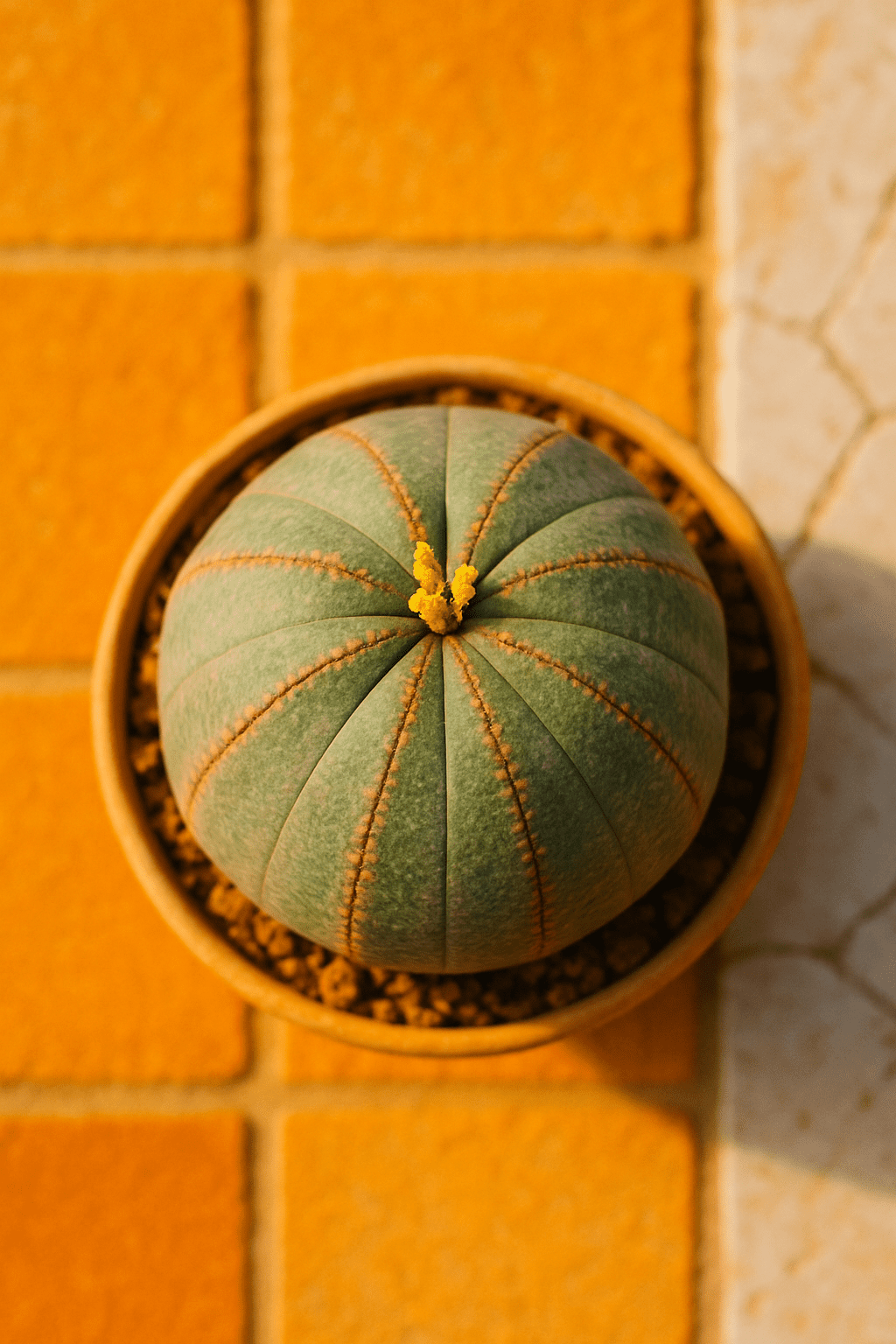
The Baseball Plant
This perfectly spherical succulent resembles a green baseball, complete with subtle ridges. Despite its cactus-like appearance, it’s actually a member of the spurge family and stores water in its globe-shaped stem.
Why it’s special: Incredible water storage capacity in its spherical form. Male and female flowers appear on separate plants, making propagation an interesting challenge.
Care notes: Extremely drought-tolerant once established. Needs bright light and excellent drainage. Warning: Contains toxic white sap—handle with care and keep away from pets.
Availability: Protected in the wild but legally propagated plants are available. Usually $20-40 depending on size. Check specialized euphorbia dealers.
6. Lithops
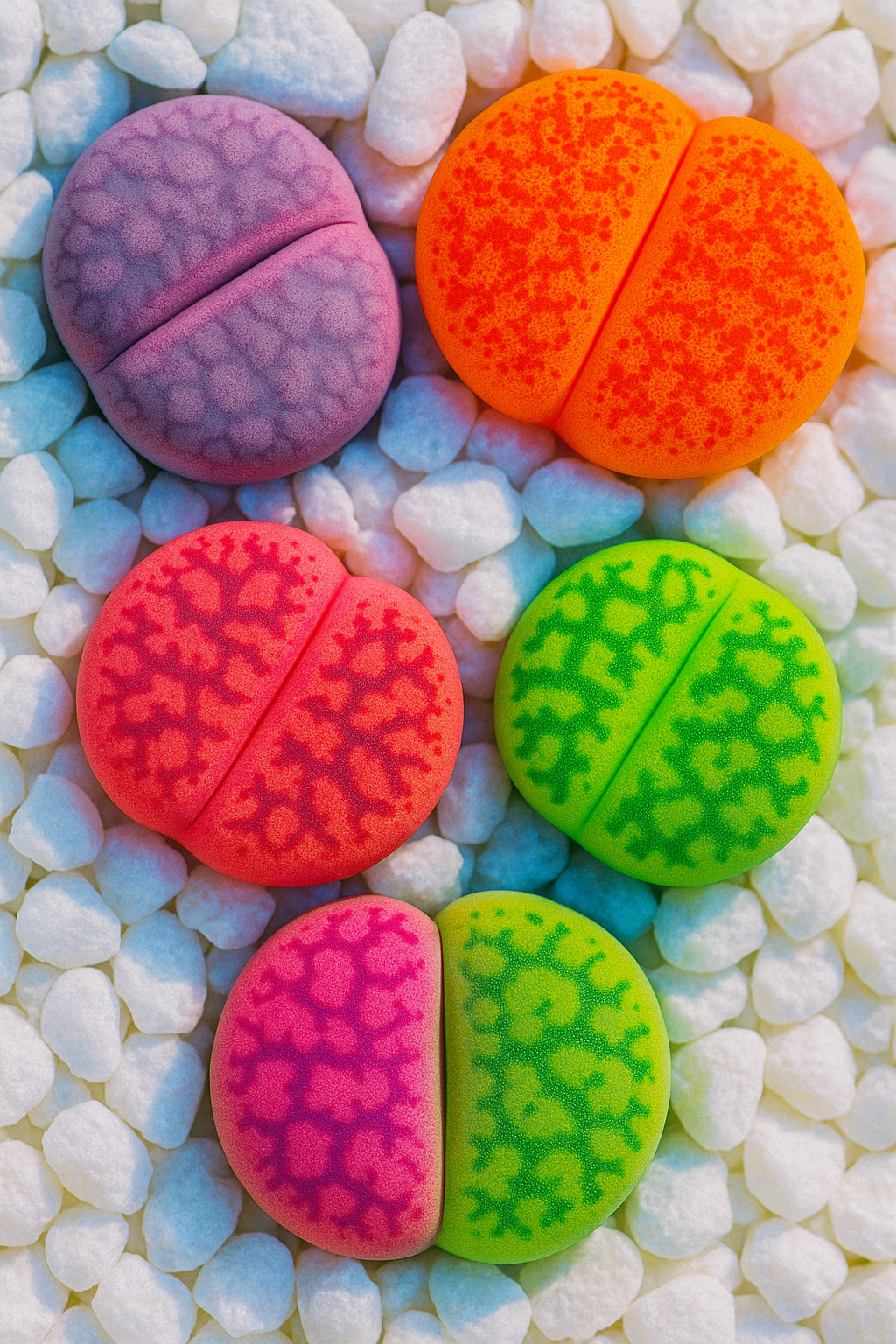
The Living Stones
These remarkable succulents have perfected the art of hiding in plain sight. Looking exactly like smooth river stones, they remain nearly invisible until a brilliant daisy-like flower emerges from the center fissure.
Why it’s special: Masters of mimicry that can live for decades. Each plant consists of just two thick leaves fused together, with new growth emerging from the center.
Care notes: Water only during active growth (fall). Requires a long, dry dormancy period. Overwatering causes the plant to literally split apart and die. Use very gritty, mineral-rich soil.
Availability: Common species available at many nurseries ($5-15). Rare varieties and mixed species packs available from specialty dealers.
7. Pseudolithos Cubiformis

The Alien Cube
This bizarre succulent looks like something from another planet—a fleshy, cubical stem covered in tubercles. While not conventionally beautiful, it has developed a devoted following among collectors who appreciate its otherworldly appearance.
Why it’s special: Extremely rare and slow-growing. Produces small flowers that smell like rotting meat to attract flies for pollination—a fascinating adaptation.
Care notes: Requires perfect drainage and minimal water. Grafted specimens are more tolerant than those grown on their own roots. Bright light but protection from intense afternoon sun.
Availability: Very rare and expensive ($50-200+). Usually only available through specialized succulent dealers or plant shows. Often sold already grafted.
8. Kalanchoe ‘Pink Butterflies’
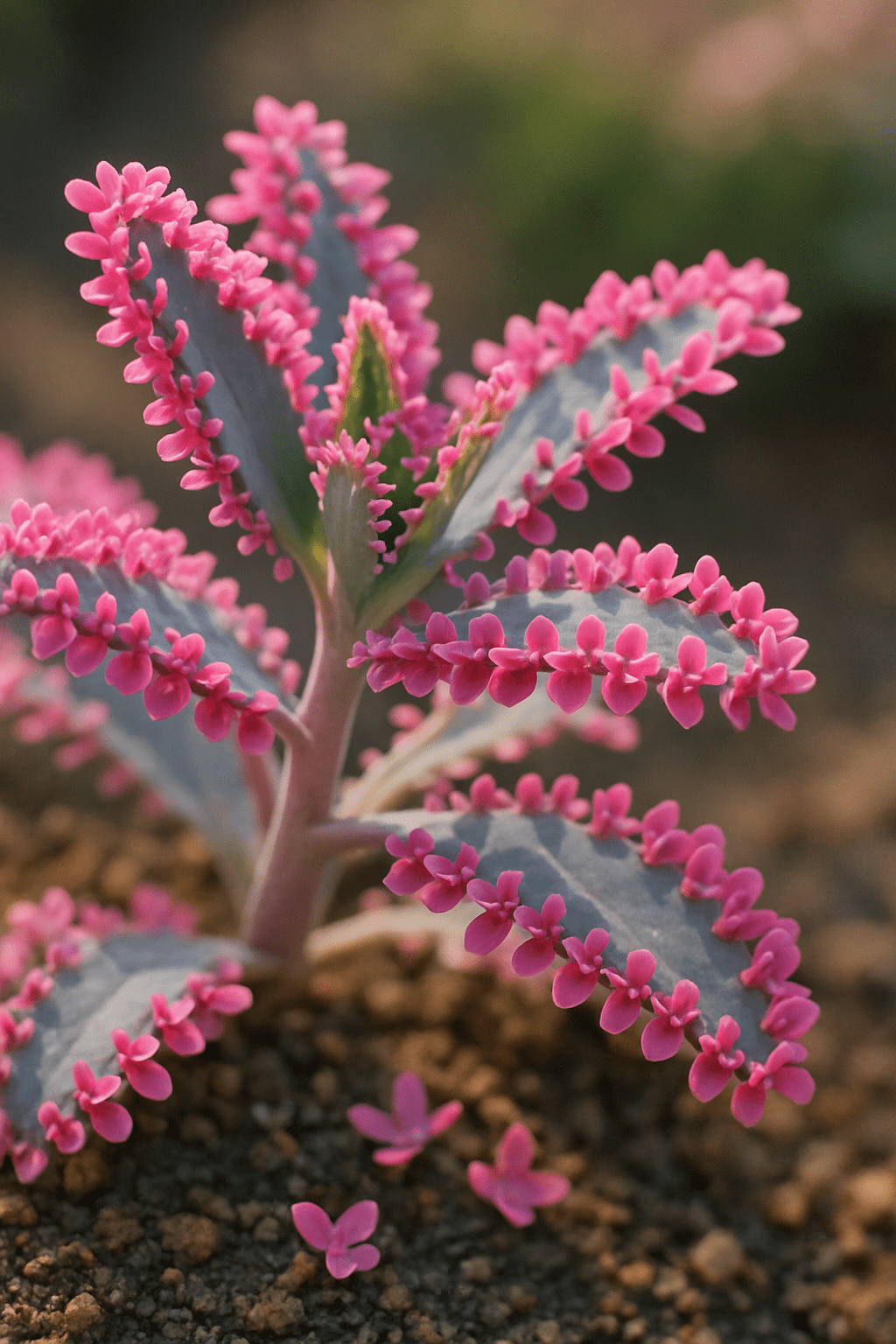
The Self-Propagating Wonder
This remarkable variety produces hundreds of tiny pink plantlets along its leaf edges. These “butterflies” eventually fall and root wherever they land, creating a self-sustaining colony of plants.
Why it’s special: Viviparous reproduction—babies grow directly on the mother plant. The pink coloration comes from anthocyanins that protect against UV damage.
Care notes: Bright light maintains the pink color; it fades to green in low light. Regular watering during growing season, but allow some drying between waterings. Pinch off plantlets to prevent overcrowding.
Availability: Increasingly available at garden centers and online ($10-25). Look for other butterfly varieties like ‘Aurora Borealis’ or ‘Pink Butterflies Variegated’.
9. Sinocrassula Yunnanensis
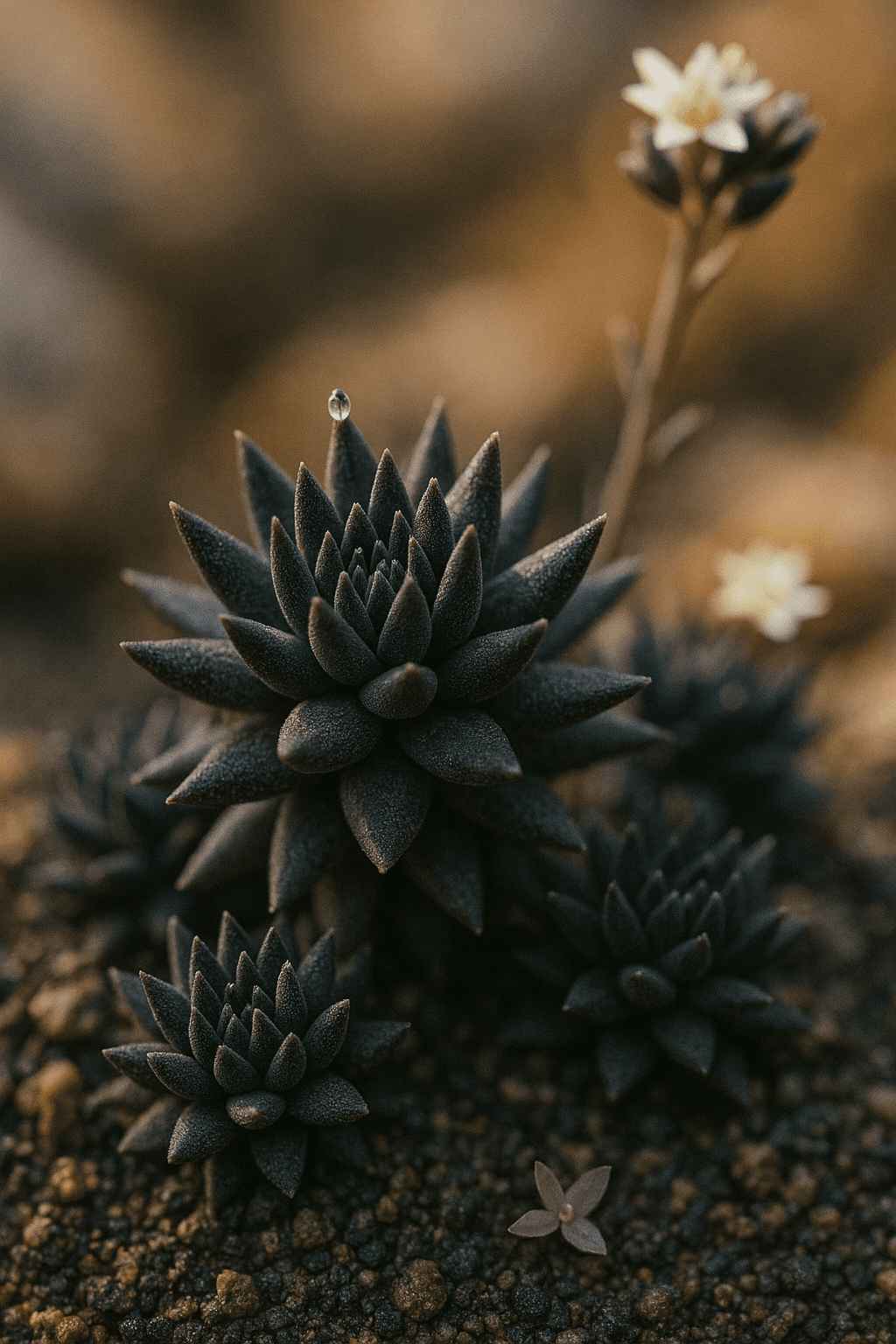
The Black Jade
This dramatic succulent forms tight clusters of nearly black, velvety leaves. The dark coloration comes from anthocyanins that provide UV protection, giving it a sophisticated, almost gothic appearance.
Why it’s special: The deep purple-black color is unusual among succulents and intensifies with bright light and cool temperatures.
Care notes: Very cold-hardy and drought-tolerant. Prefers bright light to maintain dark coloration. Forms dense mats over time, making it excellent for ground cover in rock gardens.
Availability: Less common but not rare. Available from online succulent retailers for $8-20. Often sold as rooted cuttings or small clusters.
10. Sedum Dasyphyllum
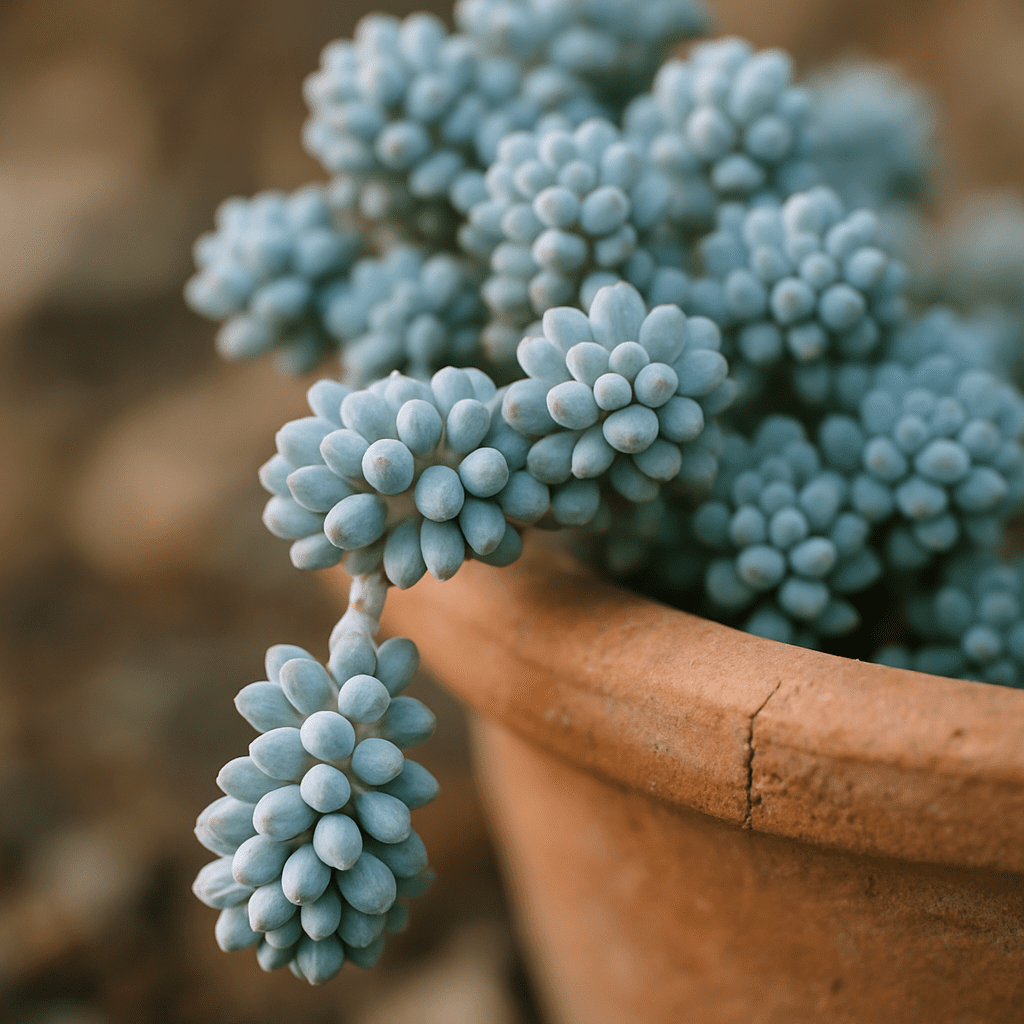
The Fairy Garden Carpet
This tiny succulent forms dense mats of bubble-shaped leaves in soft blue-green, purple, or pink tones. The color changes with temperature and light exposure, creating a living carpet that’s perfect for miniature landscapes.
Why it’s special: Incredible adaptability—colors shift dramatically with seasons and conditions. Extremely hardy and spreads naturally to fill spaces.
Care notes: Very low maintenance once established. Tolerates both drought and occasional moisture. Colors are most vibrant in bright light with cool temperatures.
Availability: Common at nurseries specializing in alpine plants or sedums ($5-12). Also available as seed for larger coverage areas.
Building Your Collection
These unusual succulents prove that the plant world is full of surprises. When adding rare specimens to your collection, remember:
- Start small: Many of these plants are slow-growing, so young plants are more affordable
- Research reputable sellers: For rare species, buy from established nurseries with good reviews
- Join communities: Online forums and local succulent societies are excellent resources for finding unusual plants and care advice
- Be patient: Many of these species reward careful, attentive care with years of unique beauty
Each of these remarkable plants brings something special to a collection—whether it’s architectural beauty, clever camouflage, or simply the joy of growing something truly unusual. They remind us that nature’s creativity knows no bounds, and sometimes the most extraordinary discoveries are hiding in plain sight.


